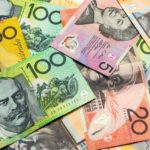 Gold declined on Tuesday as investors awaited policy makers decision on Feds tapering timeline at FOMCs two-day meeting, starting today. Assets in the SPDR Gold Trust, the biggest bullion-backed ETF, were further reduced to remain at the lowest since January 2009, adding to bearish sentiment. A weaker US dollar eased some pressure on the yellow metal.
Gold declined on Tuesday as investors awaited policy makers decision on Feds tapering timeline at FOMCs two-day meeting, starting today. Assets in the SPDR Gold Trust, the biggest bullion-backed ETF, were further reduced to remain at the lowest since January 2009, adding to bearish sentiment. A weaker US dollar eased some pressure on the yellow metal.
On the Comex division of the New York Mercantile Exchange, gold futures for settlement in February declined by 0.35% to trade at $1 240.10 per troy ounce by 08:35 GMT. Prices swung between day’s high and low of $1 247.50 and $1 239.10 an ounce respectively. The precious metal settled last week 0.8% higher. Prices touched $1 211.10 per troy ounce on December 4th, the lowest since July 5th and closed the week 1.8% lower. Last month, gold plunged 5.5 percent, the most since June and the biggest drop in November since 1978.
The precious metal has fallen 26% so far this year and is heading for the first annual drop in 13 years as investors lost faith in it as a store of value amid a rally in U.S. equities to a record and muted inflation.
Fed stimulus outlook
Prices were under pressure as market players were cautious ahead of FOMC’s two-day meeting starting today. Despite the government shutdown in October and some mixed numbers afterwards, economists raised bets on Fed cutting its bond purchases in December after upbeat data over the past 2 weeks suggested the US economy fared well and its recovery seemed sustainable.
On Thursday, the Commerce Department reported that retail sales rose solidly in November as Americans purchased automobiles and a range of other goods. Retail sales rose by 0.7% last month, beating analysts’ projections for a 0.6% gain, while October’s reading received an upward revision to 0.6% from initially estimated at 0.4%. The upbeat general indicator was lifted by a 1.8% jump in sales at auto and parts dealers, which offset a 1.1% decline in fuel prices.
The upbeat sales added to the steadily building-up positive sentiment for the US economic recovery, buoyed by a larger-than-expected third quarter growth and unemployment hitting the lowest level in 5 years.
The Federal Reserve may begin to scale back its $85 billion in monthly asset purchases at the committee’s two-day policy meeting on December 17th-18th rather than wait until January or March, according to 34% of economists who participated in a Bloomberg survey on December 6th. In November’s survey, 17% of respondents projected a tapering in December.
However, yesterday, a mixed string of US economic data cast some doubts on expectations that the Fed will announce plans to trim its $85 billion program in monthly asset purchases at its two-day policy meeting starting today.
A report by the Federal Reserve Bank of New York (FRBNY) revealed that its Empire State manufacturing index rose less than expected with a reading of 0.98 for December, short of analysts’ projections of an increase to 5.0 this month. However, the reading was much better than the previous month, when the index bottomed at -2.21. A separate report by the US department of Labor showed that the Non-farm Productivity increased by 3.0% in the third quarter, outstripping analysts’ estimates of 2.8% gain and up from 1.9% in the second quarter.
The market research group Markit reported that its preliminary US manufacturing PMI declined to a seasonally adjusted 54.4 in December from a final reading of 54.7 in November. Analysts’ forecasts projected the index to rise to 54.9 this month, while another report revealed larger-than-expected Industrial Production in November, which advanced 1.1%, compared to 0.1% in October. Analysts had expected a 0.1% increase this month.
Fed Reserve Bank of Atlanta President Dennis Lockhart said that any decision to taper should be accompanied by a limit on the size of the program or a timetable for ending it.
A weaker dollar supported the metal. The U.S. dollar index, which measures the greenback’s performance against a basket of six major peers, decreased 0.11% to trade at 80.15 by 08:07 GMT. The March contract held in a day’s range between 80.28 and 80.14. The U.S dollar index settled last week 0.06% lower, after declining 0.53% in the preceding two 5-day periods. Weakening of the dollar makes commodities priced in it cheaper for foreign currency holders and boosts their appeal as an alternative investment.
Assets in the SPDR Gold Trust, the biggest bullion-backed ETF, were cut by 8.7 tons to reach 818.90 tons on Monday, the lowest since January 2009. This was the biggest decline since October 21. The fund has not seen inflows in more than a month, hinting that a substantial increase in prices is unlikely.
Outflows have totaled nearly 486 tons this year. Billionaire hedge-fund manager John Paulson who holds the biggest stake in the SPDR Gold Trust told clients on November 20 that he wouldn’t invest more money in his gold fund because it isn’t clear when inflation will accelerate. US inflation is still well below the Fed target of 2.00%.





